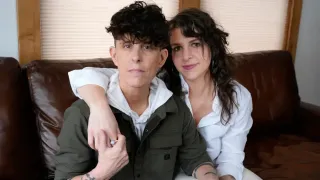
5 hours ago
Queer Loneliness: Why Silence Is No Longer an Option
READ TIME: 4 MIN.
If you’ve ever felt that ache in your chest—the sharp longing for belonging, the sense that no one quite gets you—know this: in 2025, you’re not alone, and you’re definitely not imagining it. For millions of LGBTQ+ people, loneliness isn’t just a passing mood; it’s a chronic, often invisible, epidemic that’s grinding away at our collective wellbeing. And the numbers? They’re more sobering than ever.
A recent national survey by the Trevor Project found that nearly 7 in 10 LGBTQ+ youth reported symptoms of anxiety, with more than half experiencing depression, and almost half saying they’d considered suicide in the last year—statistics that have only worsened in the past two years . For transgender and nonbinary youth, the odds are even starker. This is more than just data; it’s a mirror to the lived reality in our community: isolation, fear, and the desperate search for connection.
Let’s bust a myth: loneliness isn’t just about being alone. It’s about feeling unseen, unheard, or unvalued—even in a crowd, even online. For queer folks, this hits differently. According to a 2022 study, loneliness prevalence was as high as 56.7% for bisexual people and reached up to 63.9% for transgender people, with stigma and social exclusion as major culprits . The numbers back up what many in our community have been whispering for years: queer loneliness is not a phase, and it’s not “just in your head.”
Recent data from Hopelab and Data For Progress reveals that more than a third of American youth say loneliness disrupts their daily lives—with LGBTQ+ youth rating their mental health as poor at nearly triple the rate of their non-LGBTQ+ peers . This is not merely a generational blues. Family rejection, bullying, political scapegoating, and lack of safe spaces all compound the hurt.
Remember those all-too-familiar headlines about book bans, anti-trans sports bills, or the latest “debate” over gender-affirming care? They aren’t just fodder for outrage—they’re directly hurting queer people’s mental health. In the Trevor Project’s latest long-term study, youth who experienced pressure to undergo conversion therapy—a practice discredited and condemned by every major medical association—were far more likely to face depression and suicidal thoughts . Disturbingly, threats of conversion therapy doubled in just one year for surveyed youth, rising from 11% to 22%. “Many people believe it to be a relic of the past, but the data indicate that these dangerous practices are still happening,” says Dr. Ronita Nath, vice president of research at the Trevor Project .
Meanwhile, 45% of trans and nonbinary youth have considered moving states to escape hostile policies—a testament to how external pressures ratchet up internal pain . “Societal and structural conditions are driving these mental health outcomes, not just coinciding with them,” Dr. Nath emphasizes .
Here’s the kicker: even when queer people reach out for help, half are unable to access the mental health care they desperately want . High costs, lack of affirming providers, and—yes—fear of stigma keep the closet door slammed shut for too many. Only 60% of surveyed youth in the Trevor Project’s longitudinal study said they had access to mental health services by the end of their first year, down sharply from 80% at the start .
But when support is available? It changes lives. Three-quarters of those who received counseling reported real benefit—and the percentage seeking help during crisis moments doubled, a sign that, even in distress, hope can break through .
It’s not all bad news. The same studies show that connection is a powerful balm. The percentage of LGBTQ+ youth feeling supported at school rose from 53% to 58% in a year, and nearly three-quarters reported turning to friends for help—up from less than half at the beginning of the year . LGBTQ+ young people living in accepting communities attempted suicide at less than half the rate of those in unaccepting environments .
This isn’t just about warm fuzzies—it’s life or death. As Dr. Nath puts it, “The manner in which LGBTQ+ youth are treated in this country harms their health and risks their lives, and it is only getting worse” .
So, where do we go from here? If queer loneliness is a structural problem, then our solutions must be just as bold. It’s time to reclaim chosen family, double down on mutual aid, and keep carving out spaces—IRL and online—where queer people aren’t just tolerated, but actively cherished.
Whether it’s the pop-up drag brunch that feels like church, the Discord server where your pronouns are respected without explanation, or the annual Pride march that turns a city street into a sea of love, these moments matter. They’re the threads that weave our patchwork quilt of resilience.
And for those who still feel lost in the crowd? Reach out. Join a book club, volunteer at a queer youth center, DM that mutual who always makes you laugh. As the World Health Organization reminds us, social connection isn’t just nice—it’s linked to better health and a lower risk of early death, especially for younger people .
The queer community has always thrived in the cracks of the world’s indifference, spinning gold from pain and laughter from loss. But the loneliness crisis is a call to action—for institutions, for allies, and for queer people ourselves. Because the opposite of loneliness isn’t just togetherness; it’s the radical, world-changing act of seeing each other, and being seen.
If the world won’t talk about queer loneliness, we will. And in doing so, we just might save each other.






